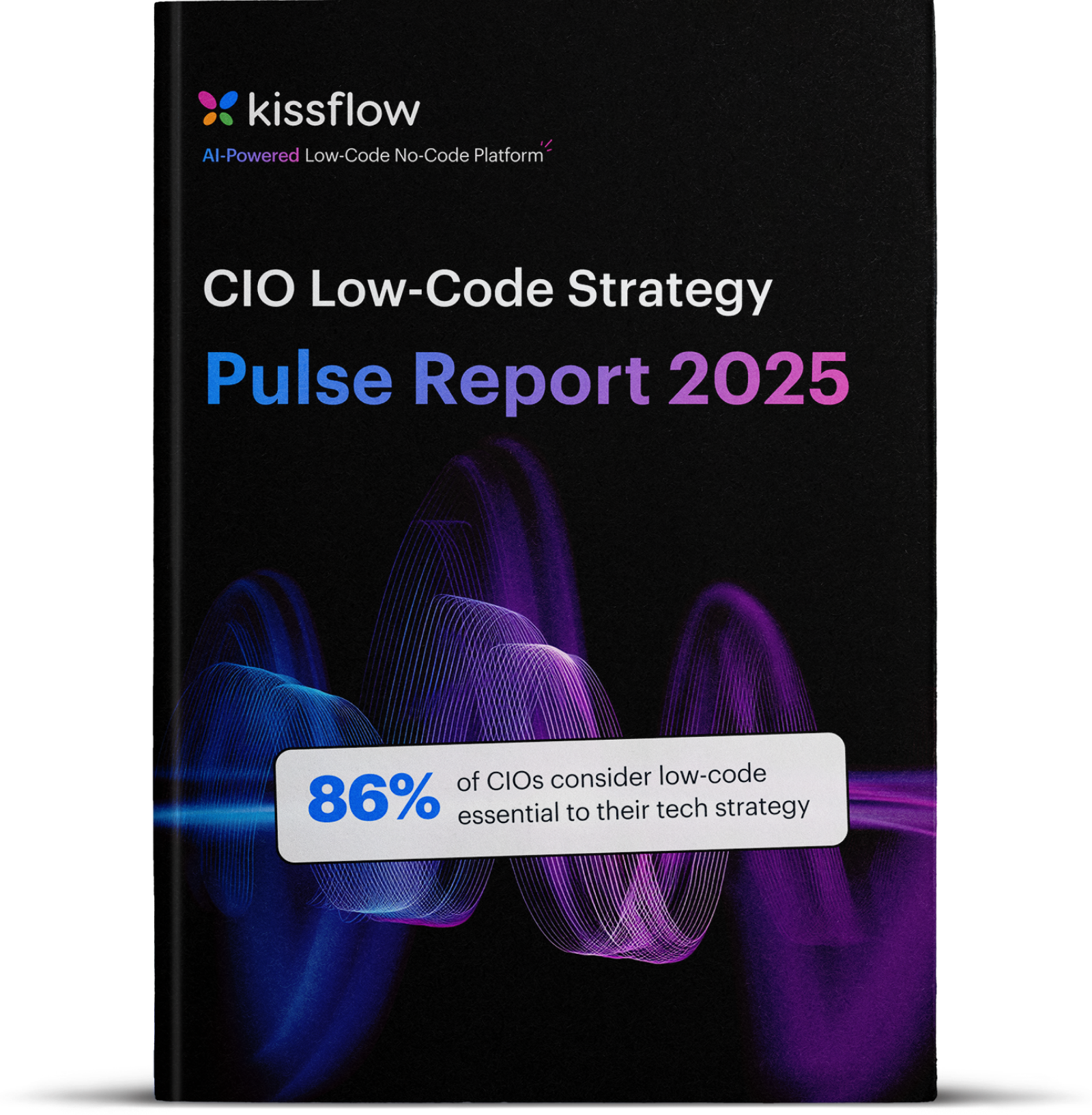
- >
- Citizen Development >
- Citizen Automation Governance: Essential Strategies for Control and Compliance
Citizen Automation Governance: Essential Strategies for Control and Compliance
The rise of citizen automation – where non-technical employees can build basic automation – is transforming businesses. Citizen automation unlocks productivity and innovation by empowering employees to streamline repetitive tasks. However, unmanaged citizen automation can introduce significant security risks, create shadow IT headaches, and lead to compliance issues. Shadow IT accounts for 50 percent of total enterprise IT spending.
Explore how to master citizen automation governance with this guide. Discover practical strategies for building a strong framework, overcoming common challenges, and using features that make implementation easier.
Why citizen automation governance matters
Twenty-five percent of businesses have concerns about low-code and citizen development. Citizen automation can offer immense benefits, but proper governance is necessary for unintended consequences to outweigh these advantages. Let's delve into three key risk areas:
1. Security risk
Imagine a scenario where an employee creates an automation to streamline a data entry process. While their intentions are good, a lack of security awareness could lead to vulnerabilities. Here's how:
Weak authentication
The automation might rely on basic login credentials, making it susceptible to brute-force attacks or stolen passwords.
Data exposure
It can accidentally expose sensitive data during processing or transfer, leaving it vulnerable to unauthorized access.
Integration vulnerabilities
Improper integration with other systems could create openings for attackers to exploit weaknesses in connected applications.
These security lapses can have dire consequences. Malicious actors could gain access to confidential information, corrupt data, or disrupt critical operations.
2. Shadow IT
When employees develop and deploy automation outside the IT’s knowledge or control, often using user-friendly and accessible citizen automation tools, it leads to shadow IT. Here's why it's a problem:
Lack of oversight
IT loses visibility into critical processes, making it challenging to identify and address potential security issues or ensure compliance with regulations.
Integration capabilities
Uncoordinated automation development can lead to compatibility problems and difficulties integrating disparate systems into larger workflows.
Maintenance headaches
Unsupported automation becomes IT's responsibility when it malfunctions or requires updates, creating an unnecessary burden.
Shadow IT creates a tangled web of uncontrolled processes, hindering efficiency and increasing security risks.
3. Compliance nightmare
Regulations in various industries mandate specific data handling practices and security protocols. Unmanaged citizen automation can lead to unintentional violations. Here are some potential pitfalls:
Non-compliance with data privacy laws
Automation mishandling personal data could violate regulations like GDPR or CCPA, resulting in hefty fines.
Industry-specific regulations
Certain industries have specific compliance requirements. For example, financial institutions must adhere to data security standards set by PCI DSS. Uncontrolled automation can lead to accidental breaches of these regulations.
Internal policy violations
Organizations often have internal policies regarding data security and access control. Unapproved automation could violate these policies, leading to disciplinary actions or operational disruptions.
The potential consequences of non-compliance are severe, ranging from financial penalties to reputational damage and even legal repercussions.
Building a robust citizen automation governance framework: Best practices
By implementing these best practices, organizations can foster a thriving citizen automation environment that maximizes innovation while minimizing risks:
Establish a center of excellence
Create a dedicated team overseeing citizen automation initiatives. The CoE should develop best practices, provide training and support, and review automation projects for compliance and security.
Clear policies and guidelines
Define policies for who can build automation, what types of processes are suitable, and how they should be documented and reviewed.
Utilize a low-code platform
Implement a low-code citizen automation platform that is user-friendly but also incorporates built-in security features and access controls.
Prioritize training and support
Equip citizen developers with the necessary skills to build secure and effective automation. Provide ongoing training and support to ensure user confidence and address any concerns.
Continuous communication and feedback
Foster a culture of open communication between IT, business users, and citizen developers. Regularly solicit feedback and iterate on the citizen automation program based on user experiences and evolving needs.
Tackling the challenges of citizen automation governance
Citizen automation has benefits, but implementing a successful governance framework presents hurdles. Let's delve deeper into the three key challenges organizations face:
1. Balancing empowerment and control
Striking the right balance between empowering citizen developers and maintaining control over critical processes and data is delicate. Here's why:
Overly restrictive controls
Excessive restrictions can stifle innovation and discourage user participation. Citizen developers might become frustrated and create shadow IT solutions to bypass cumbersome approval processes.
Lax oversight
On the other hand, insufficient oversight can lead to security vulnerabilities and compliance issues. Unvetted automation with weak security protocols exposes sensitive data or introduces opportunities for malicious actors.
Solution:
Define clear permissions
Establish a tiered permission system that grants citizen developers access based on their roles and skill sets. Organizations can empower users by establishing a tiered permission system that grants citizen developers access based on their roles and skill sets while ensuring control over sensitive data and processes.
Provide secure development tools
Implement a citizen automation platform with built-in security features like role-based access control and data encryption. These features empower users while minimizing security risks.
Foster continuous communication
Maintain open communication channels between IT and business users. Regularly solicit feedback and iterate on governance policies to find a balance that encourages innovation while maintaining security.
2. Standardization and consistency
Ensuring consistency across a diverse user base can be a challenge. Citizen developers with varying skill levels might create automation with different styles, functionalities, and security protocols. Lack of standardization leads to:
Integration issues
They might not integrate well with existing workflows or systems, creating inefficiencies and hindering potential.
Maintenance challenges
Unstandardized automation becomes difficult to maintain, debug, or update, especially when the original developer is no longer available.
Compliance risks
Inconsistent security protocols across automation increase the risk of vulnerabilities and non-compliance with regulations.
Solution:
Pre-built templates and workflows
Providing a library of pre-approved automation templates and workflows for citizen developers to leverage ensures consistency in design, functionality, and security best practices.
Training and certification
Offer training programs that equip citizen developers with the skills to build secure, standardized automation. Consider implementing certification programs to validate their competency.
Centralized review process
Establishing a review process where IT or the CoE can assess automation before deployment ensures compliance with established standards and minimizes inconsistencies.
3. Change management
Shifting mindsets and fostering collaboration between IT and business users requires effective change management strategies. Here's why:
IT resistance
IT departments might feel threatened by citizen automation, fearing a loss of control or an increased workload.
Business user skepticism
Business users might hesitate to adopt new tools or be apprehensive about data security implications.
Lack of collaboration
Citizen automation initiatives can become siloed and ineffective without clear communication and collaboration between IT and business users.
Solution:
Executive sponsorship
Secure buy-in from senior management to champion the initiative and demonstrate its value to the organization.
Change management communication
Develop a comprehensive communication plan to address concerns from both IT and business users. Highlight the benefits of citizen automation while emphasizing the importance of secure development practices.
Joint workshops and training
Organizing joint workshops and training sessions for IT and business users fosters collaboration, builds trust, and helps users understand their respective roles in the citizen automation program.

Best in Class Citizen Automation with Kissflow
Features for governed citizen automation solutions
Here are five key features that can simplify citizen automation governance:
Role-based access control (RBAC)
Enforce access controls to ensure users can only build and deploy automation within their designated permissions.
Pre-built templates and workflows
Provide a library of pre-approved automation templates and workflows to promote consistency and adherence to best practices.
Version control and audit Logs
Track changes made to automation, allowing for easy rollback in case of errors and facilitating compliance audits.
Built-in security features
Integrate security features like data encryption, user authentication, and activity monitoring to safeguard sensitive data.
Centralized deployment and management
Offer a central platform for deploying and managing all citizen-developed automation, enabling IT to maintain oversight and ensure compliance.
Kissflow: Your partner for citizen automation success
Kissflow is more than a platform; it's your partner in unlocking the full potential of citizen automation.
Our intuitive, low-code platform enables businesses to:
Democratize technology
The intuitive interface eliminates the need for extensive coding knowledge, making automation accessible to a broader range of employees.
Build powerful workflows
Drag-and-drop functionality and pre-built templates enable users to create sophisticated automation without technical expertise.

Maintain governance
Robust security features and access controls ensure citizen-developed automation complies with internal regulations and data privacy standards.
Seamless integration
Kissflow integrates seamlessly with existing enterprise applications, eliminating data silos and streamlining workflows.
Citizen automation represents a significant shift in how businesses leverage technology. By empowering employees and fostering a culture of innovation, it unlocks a wealth of potential for organizations seeking to:
- Increase efficiency and productivity
- Boost employee engagement
- Enhance agility and adaptability
- Drive continuous improvement
Kissflow stands ready to be your guide on this transformative journey. With its user-friendly platform and commitment to empowering citizen developers, Kissflow equips businesses to navigate the complexities of digital transformation and emerge as leaders in the digital age.
Empower Yourself as a Citizen Developer and Make an Impact!
Related Articles











